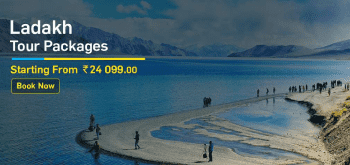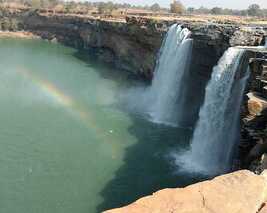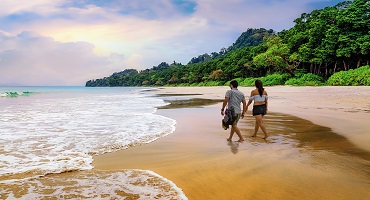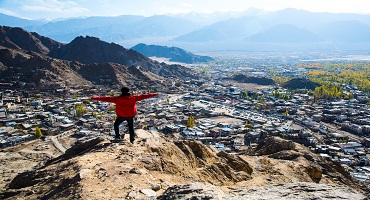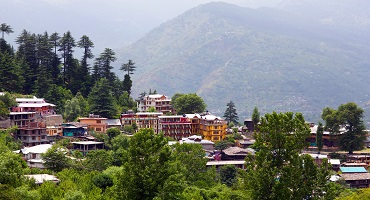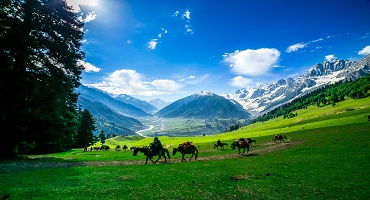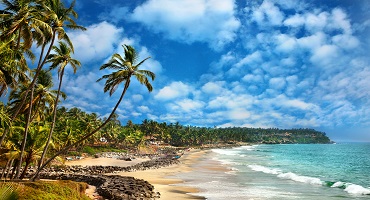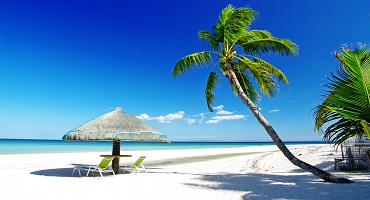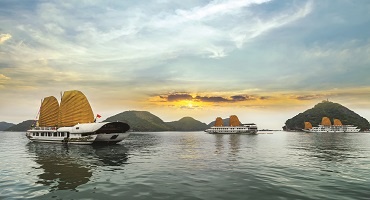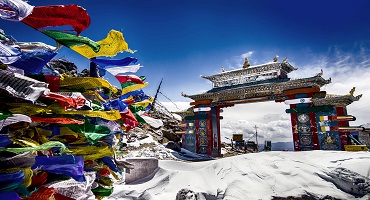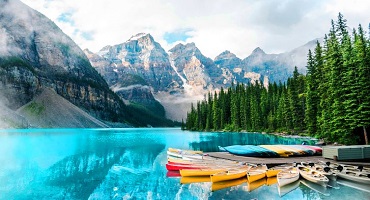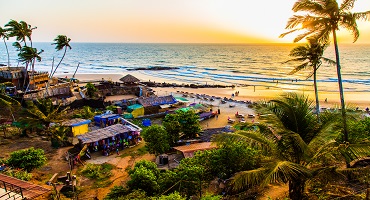Chhattisgarh – Welcome to a charismatic kingdom
Tribal hands building artisanal objects, Buddhist monks chanting amidst colourful prayer flags, forgotten caves juxtaposed with opulent palaces, Chhattisgarh will dazzle you with its charm. Home to exotic wild species, magical waterfalls and a flourishing steel industry, this state is bountiful. For the adventurous explorer, Chhattisgarh has a lustre unlike any other place.
| Chhattisgarh: A Quick View of the state |
| Capital |
Raipur |
| Official Language |
Hindi |
| Dial Code |
0771 (Raipur) |
| Population |
29.268 million (as of 2018) |
| Currency |
Indian Rupee (INR) |
| Time Zone |
UTC+05:30 (IST) |
| Area |
135,191 square km |
Highlights of Chhattisgarh: In the spotlight.
Waterfalls
The Chitrakote Falls is akin to tiny white crystals cascading at a height of 32m. Located on the Indravati River, this 300m wide waterfall is referred to as India’s Niagara. Visit the Bastar district, to gaze at this marvellous natural wonder. Situated on the Mugabahar stream, inside Kanger valley, is Tirathgarh Waterfall. Walk across the cool pebbles, to the centre of the falls, where a collection of Shiva Shrines will greet you.
Nature parks
Kanger Ghati National Park is spread across 200 square km of picturesque hilly terrain. Explore one the densest reserves and discover some of nature’s finest, including the geomorphologic limestone caves, and the striped hyena. To spot the glorious tiger and the endangered Asian buffalo, head to Indravati National Park in the Bijapur district. This park is home to large predators, and a wide variety of reptiles, among other species.
Temples
Jatmai Ghatarani Temple, in Raipur, is a little piece of heaven. The coolness of the cascading waterfall, coupled with the thriving natural greens, makes for a peaceful evening of spiritual contemplation. Worth a visit is Takpo Buddhist Monastery, in Mainpat. Located 50 km from Ambikapur, past the village of Darima, lies a hilly Tibetan paradise. Red, orange, blue and yellow will embrace you at the door, while a peek inside reveals a picture of the Dalai Lama. This quaint locality sways in a sea of red robes.
Palaces
Bastar Palace, with its pale blue and ivory architecture, symbolises the bravery of the kings of Bastar. Take a look at some of the lovely wall inscriptions, they are quite intriguing. You can also take a horse carriage ride around the property. Constructed in the 20th century is the exquisite Kanker Palace, reflecting quintessential colonial architecture. Green lawns envelope the entire complex, while pockets of pink flowers, complement the yellow structure. Another historical palace, of significant opulence, is Kawardha Palace. Spread across 11 acres, this ancient structure is now a luxury hotel. Why not get a little taste of royalty?
Caves
The Kailash Caves are burrowed deep within the crevaces of Kanger valley. These enchanting caves offers a magnificent view of stalactites and stalagmites. The former refers to pillars hanging from the roof, while the latter refers to pillars rising from the ground that were worshipped as Shiva lingams. Experience the rhythmic music caused by the cave’s reverberations. Sitabhaghra caves, in Ramgarh, is believed to be the residence of Goddess Sita. Look carefully for the footprints on the right, that act as mystical proof of the Goddesses presence.
Local culture
Like a patchwork garment, Chhattisgarh’s culture enjoys varying shades and nuances. From its poetic literature, to its graceful dance forms, intricate tribal jewellery, and Kosa silk saris, Chhattisgarh overflows with cultural significance. A trip to Saathi, an arts and craft centre in Jagdalpur, will be an opportunity for you to view the work of indigenous tribal communities. Check out the bell metal, wrought iron and terracotta pieces, they are quite stunning.
Interesting facts about Chhattisgarh: The cherry on the icing.
- Chhattisgarh is home to the largest tribal community in India, constituting 50% of its total population.
- 15% of India’s steel production, hails from Chhattisgarh.
- Batsar Dussehra, the largest festival in the state, lasts for a staggering 75 days.
- Chhollywood, is the name given to Chhattisgarh’s film industry.
- Chitrakoot falls is deemed as India’s Niagara Falls.
- It is believed that Lord Ram walked from Ratnapur to Ramoram, during his exile.
Location: A zoomed lens.
(we’ve included the image as a reference to the seahorse shape mentioned in the content)
Chhattisgarh shares its border with Uttar Pradesh in the north, Andhra Pradesh in the south, Jharkhand in the east, and Maharashtra and Madhya Pradesh in the west. This state is shaped like a seahorse, as three of nature’s children – Rihand River, Satpura Range and Chota Nagpur Plateau, create a divide between the Indo Gangetic plain and Mahanadi River.
Click here to view Chhattisgarh on Google Map
Timings: Best time to visit.
Chhattisgarh has been endowed with a tropical climate, contributing to 45-degree summers, and 29-degree monsoons. To circumvent the extreme heat and excessive rain fall, one must visit this state during the winter season. October to March, makes for the perfect holiday. However, you must plan your trip well in advance to ensure bookings.
How to get to Chhattisgarh: Your experience starts now.
By Road – Chhattisgarh is blessed to have interstate and national highways that are linked to cities such as – Bhopal, Nagpur, Jhansi, Jabalpur, Bhubaneshwar and Kolkata. You may choose between interstate bus services or chartered bus operators, depending upon your route. Taxis and minivans can also be rented, if you feel like a long drive.
By Rail – The most practical way to reach Chhattisgarh is through India’s efficient rail network. The main junctions that directly or indirectly connect the state to other parts of the country, include Raipur and Bilaspur. A choice of express and passenger trains is available. Opt from the following, depending on your point of departure – Rajdhani Express, Bilaspur-Amritsar Chhattisgarh Express, Cochin-Bilaspur, and Bilaspur-Nizamuddin Gondwana Express.
By Air – Swami Vivekananda International Airport is Chhattisgarh’s primary airport, and the only functional airport, apart from Korba Airport. Located in Raipur, it is connected to all the major cities in India, via direct flights.
History: Ancient archives
In the early days, Chhattisgarh was known as Dakshina Kosala. You can see glimpses of this name in the epic tales of Ramayana and Mahabharata. Archaeology suggests that the ancient and medieval periods, witnessed the settlement of the following kingdoms – Sharabhpurias, Panduvanshis, Somanvanshis, Kalachuris, Nagavanshi, and the Chola Dynasty. This was followed by the Maratha rule, from 1741 to 1845 AD. The British seized control from the Marathas, to form the Chhattisgarh Division of the Central Provinces. In 1956, it was incorporated into Madhya Pradesh via the States Reorganisation Act. It was on November 1st, 2000, that Chhattisgarh was declared an independent state.
History teaches us about change. An understanding of Chhattisgarh’s vibrant past will enable you to interpret the many sites you see today.






